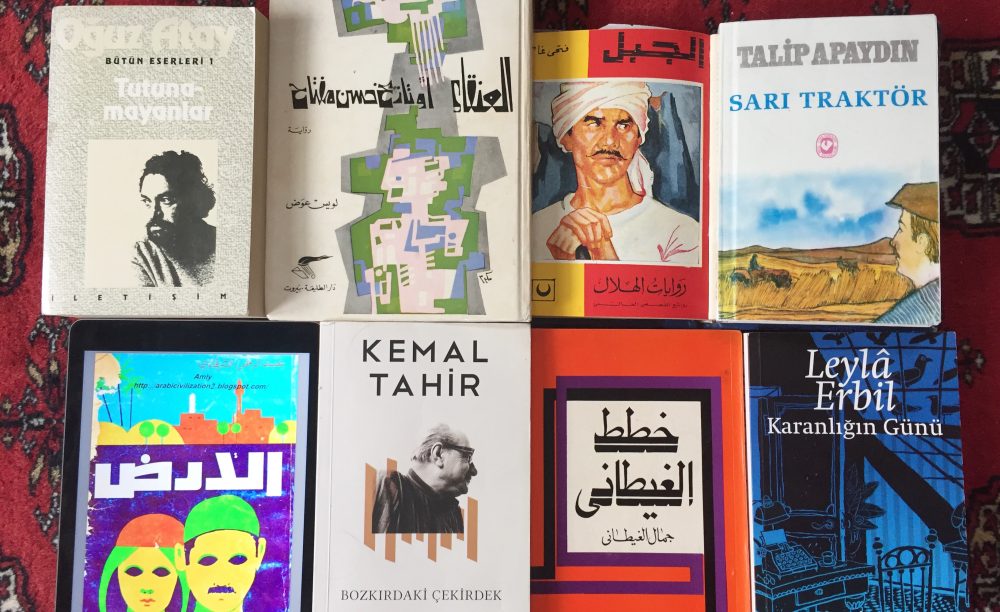
Citation
Meyer, Stefan G., 1949. The Experimental Arabic Novel: Postcolonial Literary Modernism in the Levant. State University of New York Press, Albany, 2001.
Contents
Intro: Experimental Arabic Novel and Comparitive Modernisms
Chapter 1: Modern Ambivalence and the Beginning of Narrative Experimentation
-existentialism and the fragmentation of narrative voice
-the defamiliarization of narrative
-The strategy of ironic distance
Chapter 2: Recovering the Past: The “Arabization” of the Novel
-cultural and historical counternarrative: Abdelrahman Munif
-Magical realism: Selim Barakat
-Folk Narrative and subjective expression
Chapter 3:
Recovering the Presents: the Lebanese Civil War
-fragmented reportage: Ghada Samman
-the patchwork novel: Elias Khoury
-The dynamics of war and sexuality
-The novel of interior situations.
Chapter 4: Redefining the Future: Questions of Artistic Choice.
Author
Context
Thesis
Methodology
Key Terms
Criticisms and Questions
Answers many many questions about the perceived lack of certain stylistic innovations in Arabic fiction, the continued dominance of realism, and the tricky question of postmodernism.
Notes
Introduction:
-writers in the Arab world were never bohemians, alienation was due to search for harmony in society with weakness and failed institutions.
-where privilege of ironic distance, hindrance to more complex forms of novel.
-experimental arabic novel self-conscious revolt againt Arabic narrative tradition and its ambivalence to modernity.
-Arabic novels have focused more on social conditions experienced within a particular class — whether bourgeois, peasant, or urban — and the relationship among members of a particular class.
Chapter 1:
-Kanafani – all that’s left to you, Jabra’s the ship, Mahfouz’s miramar (heavily influenced by Faulker)
-Najma Agostos really weird and unsettling.
-the strategy of ironic distance: Zayni Barakat, the pessoptimist, also Arab history and folk tradition as vehicle for irony.
Chapter 2:
-Abdulrahman Munif: cultural and historical counternarrative. Looking for innovative narrative style not imitative of the West. (Nihayet) challenging both Saudi and western colonial view of history.
-Selim Barakat and Magical Realism: the closest of any Arab author to Latin American magical realism. Uses words in weird counter-semantic ways, reminiscent of the maqama where the major purpose was the compositional process to play with the meaning of words.
-Despite being Kurd, he is perhaps the master prose stylist in Arabic today. Producing distintly Arabic work.
Al-jundub al-hadidi – formal linguistic experimentation
Fuqaha’ al-zalam – pure form of magical realism. Highly political but subordinates that to creating a new type of cultural panorama.
Folk narrative and subjective expression – Syria has been the most resistant to experimentation, realism lingers: Hannah Mina, Faris Zarzur, and Hani Rahib.
-the literary legacy of socialist realism has created its own momentum.
-Syrian historical novels of the 90s: Nabil Sulayman, Fawwaz Hahhad, Khayri al-Dhahabi, and Nihad Sirris. Way to talk obliquely about social problems.
Chapter 3:
radical fragmentation of form in attempt to express complete dislocation caused by Lebanese Civil war.
-Elias Khoury and Ghadda Samman
-Hoda Barakat – stone of laughter challenge male ethic of violence and expose ambiguities and contraditions on the other. Feminine and masculine features in one character. Atomizes the masculine war culture.
-Rashid al-Da’if exposed space between drowsiness and sleep (1986) -dream and physical reality mixed. Hallucinatory, fragmentation and interiorization lays bare psychological aspects of war.
Chapter 4:
-Ibrahim Nasrallah – prairies of fever (1985) – uses symbolist poetry techniques for narrative. Lyricism of al-jundub al-hadidi with interiorized quality of gates of the city.
-Rashid al-da’if – tiqniyat al-bus (1989) – entire novel of short guy based on minute recording of reality.
-Edward Kharrat (1990) women of Alexandria – experiment with lyrical form reminiscent of proust thirties and fourties, women of every type in the city. Exhuberant sense of unite underlying life.
Hasan Daoud – ayyam zaidah – dialect between internal and external.
Dhat – mimicking postmodernity – with rise of consumerist society – criticizing dependence on foreign goods and not being productive which leads to traditionalism. Stille enthralled to subserviene.
Conclusion:
-Edward Said wrote shitty intro to Khoury novel, calling it postmodern, which is lazy labeling unaware of local trends.
-like in Latin America, postmodern rise had to do with demobilization of the left.
Modernism in Arabic literature began from a radicalized political viewpoint and a conservative approach to experimentation with language. Modernism in the West, on the other hand, presented radical experimentation with language, and a conservative political agenda.
-Modernism in Arab world is awareness of not living in a modern era.
-Faysal Darraj – postmodernism just another attempt to import a grand recit, and to import cultural imperialism.
-experimentalism in Arabic cannot be labeled postmodernism but has to be seen in its own context.

